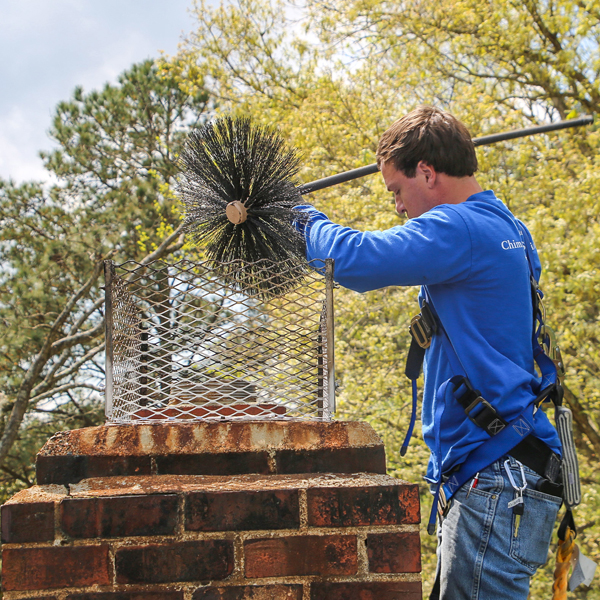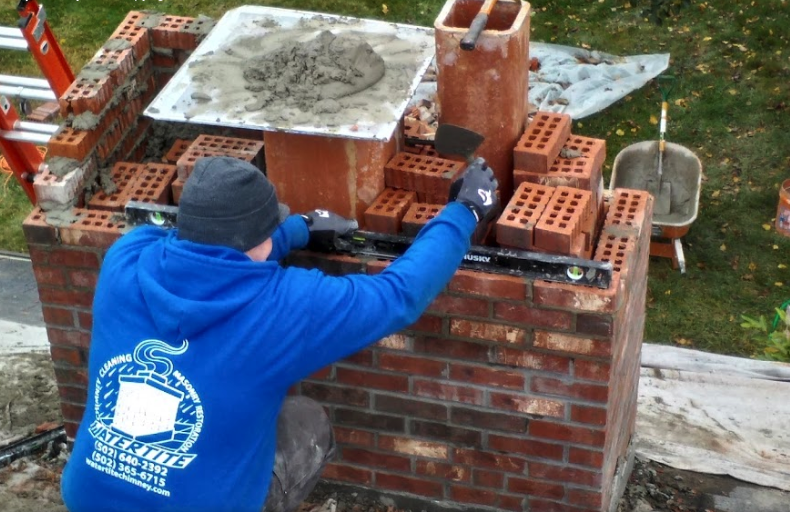Do It Yourself Chimney Maintenance San Jose: Step-by-Step Overview for Homeowners
Do It Yourself Chimney Maintenance San Jose: Step-by-Step Overview for Homeowners
Blog Article
Specialist Tips for Effective Smokeshaft Maintenance You Need to Know
Smokeshafts serve as essential elements in lots of homes, providing heat and comfort. Nonetheless, ensuring their correct upkeep is often ignored up until problems arise. Understanding the complexities of chimney treatment can be the secret to stop pricey repair services and protecting your home and family members. From the significance of normal evaluations to risk-free operational techniques, a detailed technique to smokeshaft maintenance is essential. Let's check out expert suggestions that can help you maintain your chimney in ideal problem for years to come.
Importance of Routine Examinations
Routine evaluations of chimneys are crucial for ensuring their safety and functionality. Smokeshafts play a crucial function in airing vent out unsafe gases and preserving correct airflow in a home. In time, creosote buildup, debris, and architectural damage can happen within the chimney, presenting severe threats such as smokeshaft fires or carbon monoxide gas leakages.
Throughout a smokeshaft evaluation, trained professionals assess the problem of the chimney, seeking any type of signs of damage, clogs, or deterioration. They additionally check the integrity of the flue, smokeshaft liner, and smokeshaft cap to make sure everything remains in correct functioning order. By identifying and attending to problems early, potential dangers or expensive repair services can be prevented.
Normal examinations not only aid in preserving the safety of the chimney but additionally add to its general performance. A tidy and properly maintained smokeshaft operates much more efficiently, ensuring appropriate air flow and decreasing the risk of indoor air pollution. Scheduling yearly chimney assessments is an aggressive step that house owners can take to protect their building and loved ones.
Cleaning Techniques and Frequency
Maintaining the safety and effectiveness of a chimney involves not just regular inspections yet also applying appropriate cleaning strategies and identifying the optimal regularity for cleaning. Chimneys should be cleansed by a specialist smokeshaft sweep at the very least annually, also if they are not often utilized. If the smokeshaft is utilized consistently, particularly with wood-burning ranges or fire places, it might need more constant cleansings to stop the accumulation of creosote, an extremely flammable material that can lead to chimney fires.
The cleaning process usually involves removing creosote, soot, and debris from the smokeshaft flue, smoke chamber, and firebox. Specialist chimney sweeper use specialized brushes, vacuum cleaners, and devices to guarantee comprehensive cleansing without producing a mess in the home. Additionally, they inspect the chimney's structure for any kind of indicators of damage or use that might need repair work. Home owners should never ever overlook chimney cleansing, as it is essential for preserving a safe and functional smokeshaft system - Chimney Maintenance San Jose. Routine cleansings not just minimize the danger of chimney fires but likewise improve the chimney's overall performance and durability.
Attending To Chimney Leaks

When attending to chimney leaks, extensive inspection and punctual repair services are essential to protect against water damage and keep the structural integrity of the chimney,. Leaks in a chimney can bring about major issues such as mold development, damage of the chimney structure, and even possible fire risks. To efficiently address chimney leaks, beginning by checking the smokeshaft cap, crown, flashing, and masonry for helpful resources any kind of indicators of damages or wear. Chimney caps need to be securely in position to avoid water from getting in, while the crown and flashing ought to be undamaged and properly sealed. Any splits or voids in the masonry must be repaired without delay to stop water seepage. Additionally, think about waterproofing the chimney to offer an extra layer of security versus wetness. Normal maintenance and examinations can assist deal with and identify smokeshaft leaks early, conserving you from pricey repairs and guaranteeing the safety and security and longevity of your chimney.
Comprehending Creosote Build-Up
To understand the prospective dangers of creosote build-up in smokeshafts, it is necessary to acknowledge its development process and influence on chimney performance. When timber or fossil gas are burned, Creosote is a black or brownish tar-like material that accumulates inside chimney systems. As smoke increases through the smokeshaft, it condenses and cools, bring about the development of creosote, which sticks to the chimney walls.

Normal smokeshaft inspections and cleanings by an expert smokeshaft sweep are critical in protecting against creosote build-up and making sure the safe procedure of your smokeshaft system.
Safe Operation Practices
Executing appropriate safety and security protocols is vital for the effective and safe operation of smokeshaft systems. Always ensure that the smokeshaft is expertly evaluated and cleaned up routinely to eliminate any creosote accumulation, which can lead to chimney fires.
Additionally, make certain to only melt skilled wood in your fire place, as eco-friendly or damp wood can create more creosote and cause hazardous chimney obstructions. Last but not least, never leave a fire ignored and always see to it the fire is entirely extinguished prior to going to sleep or leaving your home. By adhering to these risk-free procedure practices, you can delight in a comfy and warm fire while making sure the safety of your home and enjoyed ones.
Final Thought
In final thought, preserving your chimney is important for ensuring its safety and performance. Regular inspections, appropriate cleansing strategies, resolving leakages, taking care of creosote accumulation, and complying with risk-free operation methods are crucial facets of smokeshaft maintenance. By remaining on top of these jobs, you can stop prospective threats and additional reading lengthen the lifespan of your chimney. It is necessary to prioritize smokeshaft maintenance to keep your home cozy and risk-free throughout the chillier months.
Over time, creosote buildup, particles, and structural damages can happen within the smokeshaft, posturing significant risks such as chimney fires or carbon monoxide leakages.
If the smokeshaft is made use of on a regular basis, especially with wood-burning ovens wikipedia reference or fireplaces, it might need even more constant cleanings to stop the build-up of creosote, a highly combustible material that can lead to chimney fires. (Chimney Maintenance San Jose)
To understand the prospective threats of creosote accumulation in smokeshafts, it is essential to acknowledge its development process and effect on chimney performance. As smoke climbs with the smokeshaft, it condenses and cools down, leading to the formation of creosote, which sticks to the smokeshaft wall surfaces.
Constantly guarantee that the smokeshaft is skillfully examined and cleansed regularly to eliminate any creosote accumulation, which can lead to smokeshaft fires.
Report this page